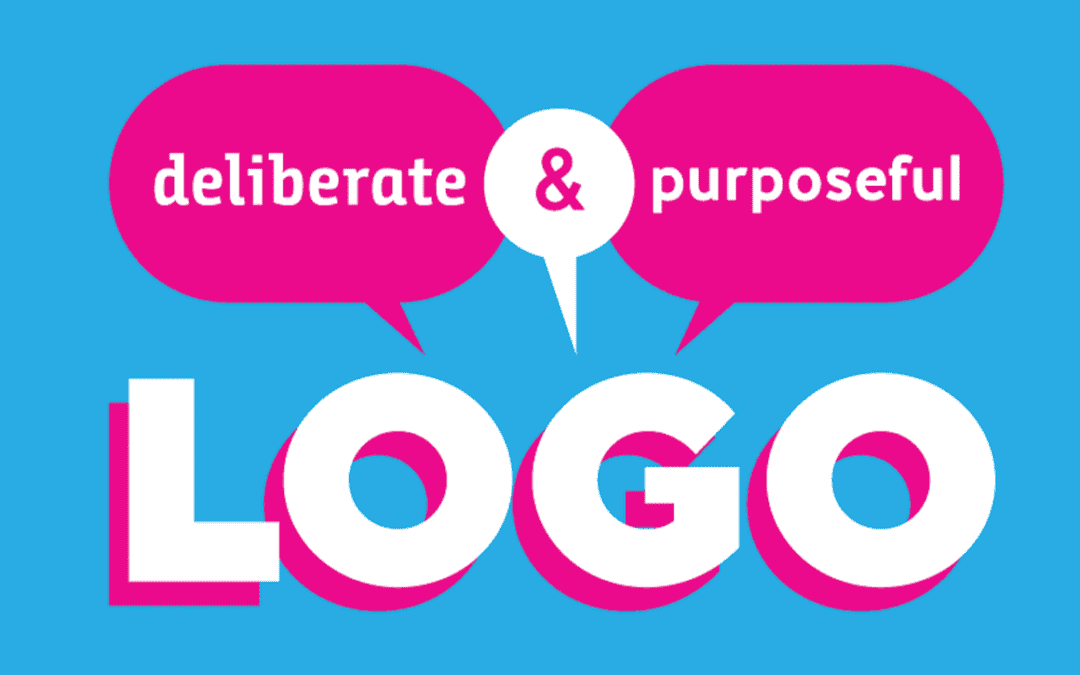In business, our actions must be deliberate and well thought out. Whether to create awareness, make money, foster relationships or simply reward customers, every effort requires some thought before execution. In addition, actions a business makes are also open to public fanfare or scrutiny. Therefore, it is crucial that a business’s image matches its overall purpose and is created with deliberation. Creating a deliberate and purposeful logo takes a bit of forethought.
Creating a Deliberate Logo
How to convey that in a logo is no small task. If a logo looks rushed or falls short of considering the details, people will wonder if that is how that business operates. For example, suppose a business’s logo is a bit messy. Perhaps, the letter spacing is slightly off, it’s a little pixelated, there are weird-looking letterforms, or the icon/symbol is difficult to decipher. People will wonder if that indicates the attention to detail a customer can expect from that business. It is easy to venture down this “good enough” path to save on time and cost. However, creating a quick logo and calling it a day is somewhat of a “false start.”. Re-designing a logo after it is already on business assets is a costly endeavour. If the logo is done right the first time, this will not happen.
Being deliberate in all aspects of your logo and keeping it clean and simple is not as easy as it seems. However, it is of utmost importance to ensure that nothing is misconstrued. This means spending time with your logo and making decisions based on how clear and sharp it looks up close and from a distance. Ensuring that your logo is a scalable vector file is one way to achieve this. (Look for files such as an EPS, SVG, or AI for your logo collection.) Keeping a logo clean and simple also means assuring that your logo doesn’t look like something unintended.
Get a Second Opinion
The clarity in design should eliminate any missteps in visual double entendre. Just take a look at the logos that pop up after typing “worst logo designs” in a web browser. You will see just how something that might have been created with good intentions could go horribly wrong. There is such a thing as being “too close” to a project, whereby you no longer see the faults in your design. Taking a step back and looking at your logo from multiple angles can help you regain perspective. Getting someone you trust to look it over and give honest feedback could also help. The important thing is not to leave anything in logo design to chance.
Demographics with specific needs may respond better to businesses that speak directly to them and understand them.
Think About Your Target Audience
Consider your audience and their affinity to certain things such as typefaces, colours, and letterforms. By using their preferences, you will save yourself from alienating the people you are trying to reach. For example, your audience might be predominantly online, which generally means they read sans-serif fonts regularly. It also means they might prefer to see things with higher contrast. The resulting insight tells you bolder colours might work well in your logo.
Demographics with specific needs may respond better to businesses that speak directly to them and understand them. For example, if you have a company designing unique software that helps people with vision challenges, you would want to make sure your logo was well-spaced, a bit larger and had a significant amount of contrast. You would make sure nothing in your logo is too abstract and that there are no unique letterforms. You would also make sure to use a monochromatic colour palette with very few tints or shades. Possibly a one-colour logo that passes the test of an online colour contrast checker is best.
NOTE: You’d also want to ensure you adhere to good accessibility design practices beyond your logo. But for the sake of this article, I am only going to focus on the logo.
Final Thoughts
Take the time to think about where your logo will exist, who will see it and in which media it will be seen from the beginning, you can make some deliberate and purposeful design decisions that will give your business the identifier it deserves. This means considering things aside from personal preference and making some decisions based on research and fact.
Knowing your audience demographic and catering to their specific needs and interests in designing a logo shows how deliberate and purposeful you are in business. Although most people will not notice some of the best designs, poor design is off-putting and easy to spot. Carefully executed design is another way of showing just how much you care about your customers and the success of your business.
What does your logo say about you? Insight TWO: My logo says, “I know what I’m doing.”
Need help with your logo design? You can learn more about how I approach logo design in my article Add Value to Your Logo Design Process by Creating Options. You can also connect with me by email or through my website cyanbolddesign.com.

